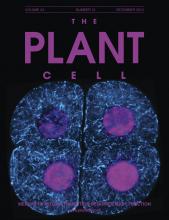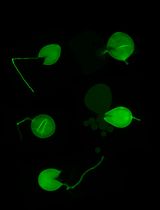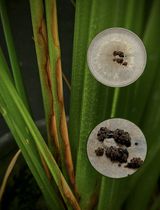- EN - English
- CN - 中文
Wheat Coleoptile Inoculation by Fusarium graminearum for Large-scale Phenotypic Analysis
用于大规模表型分析的小麦胚芽鞘禾谷镰孢菌接种
发布: 2017年08月05日第7卷第15期 DOI: 10.21769/BioProtoc.2439 浏览次数: 11383
评审: Gazala AmeenVinay PanwarAnonymous reviewer(s)
Abstract
The ascomycete fungus Fusarium graminearum is a destructive fungal pathogen of wheat, barley and maize. Although reverse genetics and homologous recombination gene deletion methods have generated thousands of gene deletion mutants of F. graminearum, evaluating virulence of these fungal mutants is still a rate-limiting step. Here we present a protocol for inoculation of wheat coleoptiles with conidial suspensions for large-scale phenotypic analysis, and describe how it can also be used to assess fungal infectious growth and symptom developmentat a cellular scale. The inoculation method described in this protocol provides highly reproducible results in wheat coleoptile infection by F. graminearum.
Keywords: Fusarium graminearum (禾谷镰孢菌)Background
Fusarium graminearum (previously also called Gibberella zeae) is a destructive pathogen that upon infection is responsible for causing Fusarium head blight (FHB) and seedling blight on cereal crops, as well as stalk and ear rot on maize (Dal Bello et al., 2002; Bai and Shaner, 2004; Kazan et al., 2012). Extensive molecular and genetic studies have been performed to investigate the interaction between F. graminearum and wheat. Given the availability of an efficient genetic transformation system and the well annotated genome, hundreds of F. graminearum genes have been investigated for their roles in vegetative growth, sexual development, secondary metabolism, stress responses and even virulence on host (Jia and Tang, 2015). However, only a few fungal effectors (e.g., FGL1 and deoxynivalenol) and host resistance genes (e.g., wheat Fhb1) have been identified (Proctor et al., 1995; Blümke et al., 2014; Rawat et al., 2016).
F. graminearum has been reported to lack pathogen-specialized patterns that typically induce gene-for-gene-mediated resistance in the host (van Eeuwijk et al., 1995). Furthermore, gene redundancy and functional complementation make assigning definitive virulence roles to pathogen genes achallenge. In addition, the traditional wheat head infection assay is limited due to seasonal, temporal and spatial factors. The distinct structures (rachis, paleas, lemmas, caryopses and glumes) and diverse features of wheat florets also make it difficult to track the infection progress of F. graminearum.
Previously, we used a modified wheat coleoptile infection assay and microscopic inspection to study F. graminearum infection inside host tissue (Zhang et al., 2012). Unlike the wheat head infection assay, there are few temporal and spatial constraints for the seedling infection system. The wheat coleoptile infection assay is performed in a growth chamber that can hold up to two hundred 24-well plates, which means more than 100 genes can be evaluated for their roles in virulence (three independent transgenic lines for each tested gene, and at least twelve seedlings for inoculation of each fungal strain). The time required to complete the assay is short: ten days for seed germination (Figure 1), inoculation (Figure 2) and examination of lesion size (Figure 3). The structure of wheat coleoptile is simple: the annular coleoptile comprises similar cells and two vascular bundles (Figure 2D) and is easy to inspect microscopically (Zhang et al., 2012). Seven genes were identified required for full virulence of F. graminearum on wheat coleoptile, and several of which were also required for wheat head infection (Zhang et al., 2012) and even maize stalk infection (Zhang et al., 2016).
Materials and Reagents
- Pipette tips (Corning, Axygen®, catalog number: T-300-R-S )
- Disposable paper towels (Vinda Classic Blue 1800, Vinda, catalog number: V4028 )
- 24-well cell culture plate (Corning, Costar®, catalog number: 3524 )
- Sterile toothpick
- Microtubes (Corning, Axygen®, catalog number: MCT-150-C )
- Medical-grade gauze (regular cotton yarn, Shanghai Honglong Medical Material Company)
- Medical-grade absorbent cotton (Shanghai Honglong Medical Material Company)
- Enamel tray (20x 30 x 5 cm)
- Glass slides (specifications: 76.2 x 25.4 mm, thickness: 1.0-1.2 mm) (Livingstone, catalog number: 7105-1 )
- Cover slips (specifications: 24 x 50 mm, thickness: 0.13-0.16 mm) (CITOTEST LABWARE MANUFACTURING, catalog number: 10212450C )
- Fungal strains: F. graminearum wild-type strain PH-1 (NRRL 31084), AmCyanPH-1 (Zhang et al., 2012) and gene deletion mutants of PH-1 (Zhang et al., 2012 and 2016)
- Plant material: Wheat (Triticum aestivum) cultivar Zhongyuan 98-68 (susceptible to F. graminearum and widely cultured in Henan, China)
- Sterile water
- V8 vegetable juice (CAMPBELL, catalog number: V8® ORIGINAL )
- Calcium carbonate (CaCO3)
- Agar powder
- Mung beans
- V8 juice agar medium (He et al., 2016; see Recipes)
- Mung bean liquid medium (He et al., 2016; see Recipes)
Equipment
- 500 ml flask
- Pipettes (Eppendorf)
- Growth chamber (Ningbo Jiangnan Instrument Factory, model: RXZ-1000 )
- Mould cultivation cabinet (Yiheng, model: MJ-150-I )
- Biological safety cabinet (ESCO Micro, model: FHC-1200A )
- Constant temperature shaker (Taicang, model: DHZ-DA )
- Hemocytometer (0.10 mm, 1/400 mm2) (QIUJING, model: XB-K-25 )
- Fluorescent microscope (Olympus, model: Olympus BX51 )
- Confocal microscope (Olympus, model: Fv10i )
- Centrifuge (Beckman Coulter, model: Avanti J-E Series )
- Camera (Canon, model: EOS 7D )
- Autoclave
- Rule
Software
- ImageJ (http://rsbweb.nih.gov/ij/index.html)
- Microsoft Excel
Procedure
文章信息
版权信息
© 2017 The Authors; exclusive licensee Bio-protocol LLC.
如何引用
Jia, L., Wang, W. and Tang, W. (2017). Wheat Coleoptile Inoculation by Fusarium graminearum for Large-scale Phenotypic Analysis. Bio-protocol 7(15): e2439. DOI: 10.21769/BioProtoc.2439.
分类
植物科学 > 植物免疫 > 病害生物测定
微生物学 > 微生物-宿主相互作用 > 真菌
您对这篇实验方法有问题吗?
在此处发布您的问题,我们将邀请本文作者来回答。同时,我们会将您的问题发布到Bio-protocol Exchange,以便寻求社区成员的帮助。
提问指南
+ 问题描述
写下详细的问题描述,包括所有有助于他人回答您问题的信息(例如实验过程、条件和相关图像等)。
Share
Bluesky
X
Copy link












